Recent Articles
Popular Makes
Body Types
2020 Ford F-350 Super Duty vs. 2020 Ram 3500 Heavy Duty
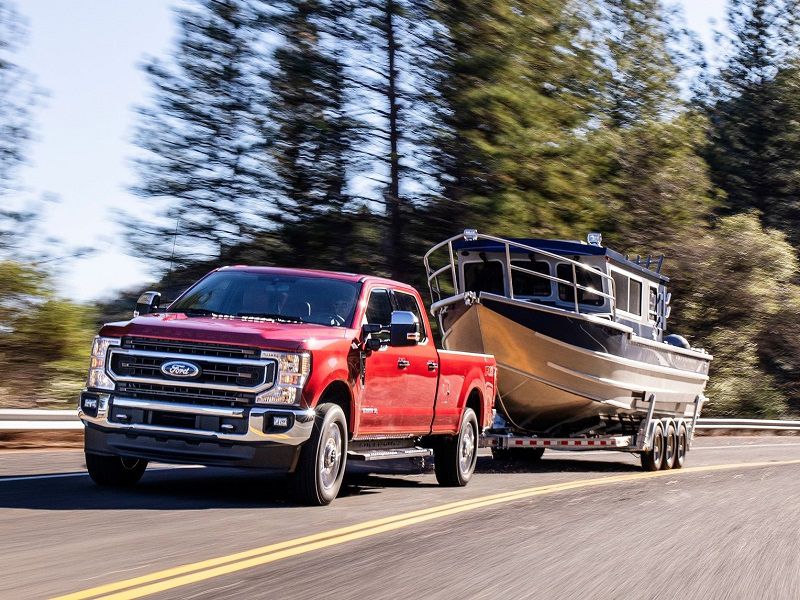
2020 Ford Super Duty ・ Photo by Ford
This is a competition between America’s two largest and most powerful vehicles, 2020 Ford F-350 Super Duty and the 2020 Ram 3500 Heavy Duty. They’re not only a block long and weigh about 7,000 lbs each, they’re the only two vehicles you can buy with 1,000 lb-ft of torque. One thousand! And we don't mean combined. Each truck is available with 1,000 head-twisting, earth-moving, and stump-pulling pound-feet of torque.
Last year, Ram completely redesigned its largest pickup, not only improving its capability but also its comfort and refinement. This year Ford has made a long list of improvements to its popular F-350 Super Duty, adding power and safety technology. Both are available with a big gas-burning V8 or a turbodiesel, and both are offered in a range of body styles and configurations including a dually with four back tires and reinforced rear suspension for ultimate load-carrying and towing capacity. But which is best? Let’s examine the 2020 Ford F-350 Super Duty and the 2020 Ram 3500 Heavy Duty in key areas and decide.
Styling and Design
Built in Saltillo, Mexico, our very red RAM 3500 dually test truck turned heads with its voluptuous lines, its massive black wheels, and the purposeful presence of a Kenworth. For our money, it’s the best-looking of America’s big pickups. Unlike the Ford F-350 Super Duty, the Ram’s shapely body and bed are made from steel. Its front end is visually strong and determined, but there’s also an understated elegance to its design, which is sure to age well as the years pass.
Ford’s Super Duty is built in Kentucky, and it’s the best selling of America’s heavy-duty pickups. By now, the Ford’s boxy styling is familiar, and it has grown on us over the years. The F-350 looks tough but it isn’t as imposing as the Ram, and its detailing isn’t quite at sophisticated. Still, we can appreciate its no-nonsense simplicity, like jeans and a T-shirt.
Ram 3500 Heavy Duty
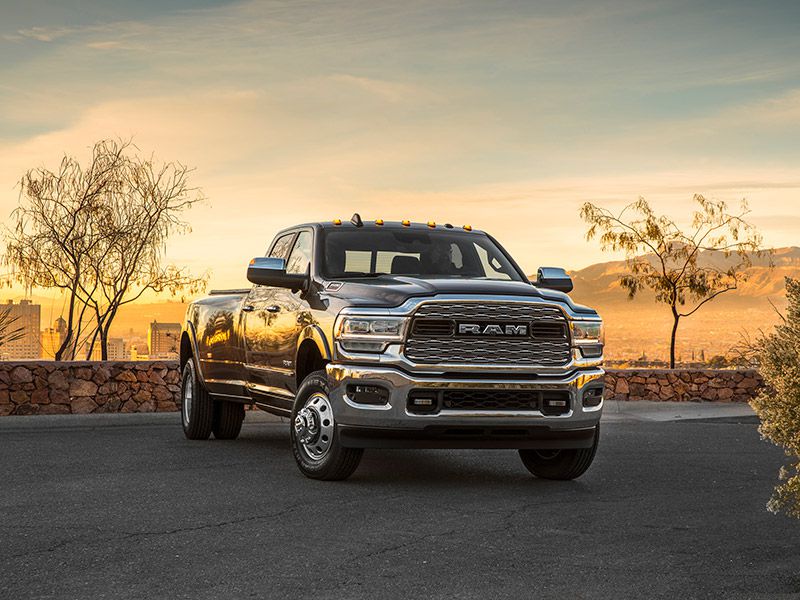
Photo by Fiat Chrysler Automobiles
Comfort and Cargo
Big trucks like these better offer big-time comfort. Both the Ram and Ford deliver just that. They are both extremely comfortable, especially on long hauls, and each offers as many fancy features as your neighbor’s six-figure Mercedes. Our Ford F-350 test truck even had massaging seats. Both trucks are offered in a wide range of body styles and bed sizes, and have about as much interior space as the Raiders’ new stadium. Surprisingly the Ford’s Crew Cab has a bit more rear legroom than Ram’s Mega Cab, but we prefer the interior design of the Ram, which is extremely well detailed in the higher trim levels, and the shape of its seats.
The Ram also has the edge when it comes to payload. Its max payload rating of 7,680 lbs is extraordinary and beats the Ford’s 6,960 lbs without breaking a sweat. But the F-350 can tow more weight than its rival. With the Cummins HO turbodiesel, a crew cab RAM 3500 dually long box with 2WD or 4WD is rated to tow up nearly 20,000 lbs on a conventional hitch and a fifth-wheel trailer weighing over 35,000 lbs. With its turbodiesel, the Ford is rated to tow a maximum of 21,400 lbs. Add a fifth wheel/gooseneck and it can pull 35,400 lbs.
Tie
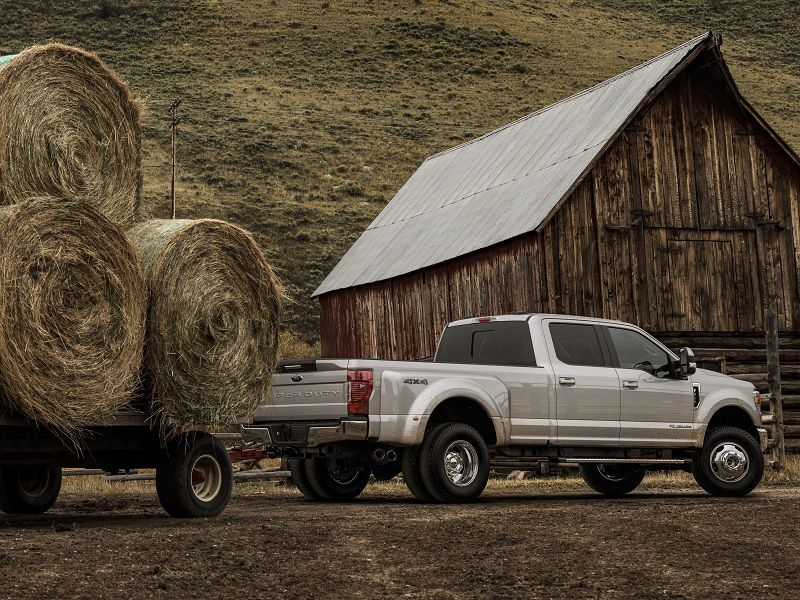
Photo by Ford
Infotainment System
Ram equips the base Tradesman trim level with a 5-inch screen, while the other trim levels get an 8.4-inch unit standard. Upper trim levels get navigation, 4G Wi-Fi hotspot, Android Auto, and Apple CarPlay. On the top three trim levels — Laramie Longhorn, and Limited — a 12-inch screen is optional. It’s the largest touchscreen in the class and it’s a glorious thing. Wireless phone charging is also available.
Ford’s base trim level, the XL, gets a 4.2-inch screen, while all the other trim levels have an 8-inch touchscreen. Every version has a 4G Wi-Fi hotspot, while trucks with the larger screen feature Android Auto, Apple CarPlay, and navigation with pinch-and-zoom. The two systems offer similar graphics quality and features, but we prefer the Ram’s system, which is quicker to respond and more intuitive to use.
RAM 3500 Heavy Duty
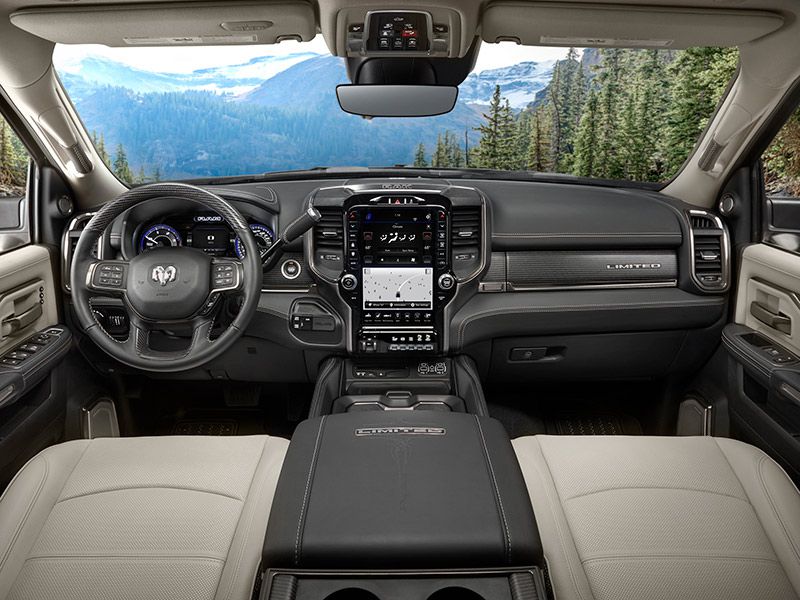
Photo by Fiat Chrysler Automobiles
Safety
Neither of these trucks has been crash-tested or have been given safety ratings by the National Highway Traffic Safety Administration or the Insurance Institute for Highway Safety.
Both also offer about the same amount of tech-based accident avoidance technology. Ram offers blind-spot monitoring, automatic emergency braking, and adaptive cruise control. Depending on the trim level, Ford offers adaptive cruise control, blind-spot monitoring with a cross-traffic alert, a lane-keeping alert, and automatic emergency braking.
Tie
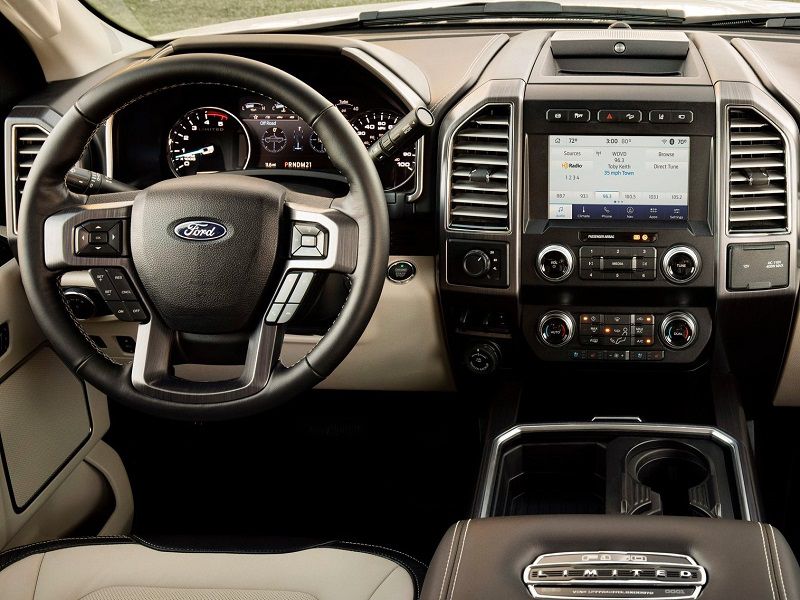
Photo by Ford
Power and Performance
For the most torque, the heavy-duty truck class is still Ford’s show. It offers three engines in the F-350. Its two gas engines are a 6.2-liter V8, making 385 horsepower and 430 lb-ft of torque, and a new 7.3-liter V8 with 430 hp and 475 lb-ft of torque. This year, Ford has also pumped up its 6.7-liter Power Stroke diesel V8 to deliver 475 horsepower and 1,050 ft-lbs of torque. Both numbers are best-in-class. All three engines are paired with 10-speed automatic transmission.
With 410 hp and 429 lb-ft of torque, the Ram’s 6.4-liter gasoline-burning Hemi V8 is no lightweight. It’s paired with an excellent eight-speed automatic. Ram offers two turbodiesels, both 6.7-liter inline six-cylinders built by Cummins. Many consider them to be the mack daddy of diesels. The first produces 370 hp and a massive 850 lb-ft of torque. And then there’s the High Output version, which makes 400 hp and 1,000 lb-ft of torque. Both diesels are backed by a six-speed automatic. It isn’t as sophisticated at Ford’s new 10-speed, but it has proven to be tough as nails.
Ford F-350 Super Duty
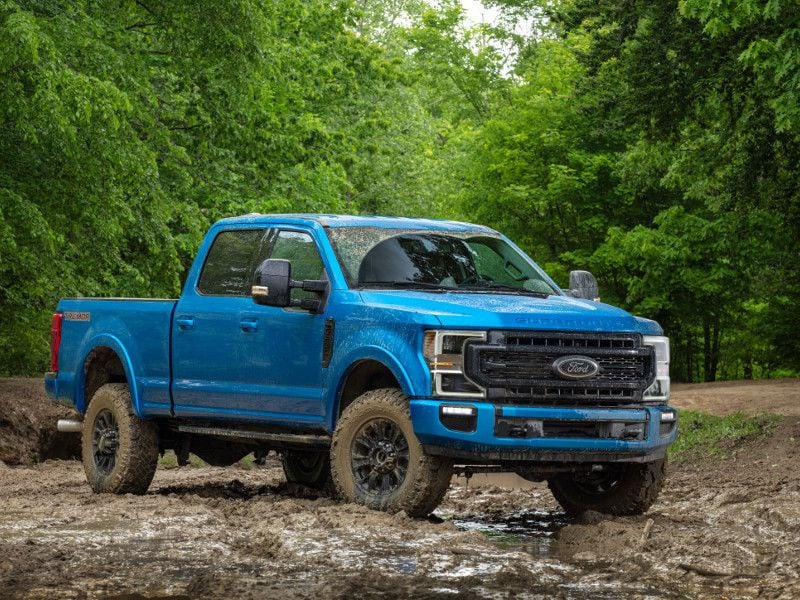
Photo by Ford
Fuel Economy
Big heavy-duty trucks like these aren’t assigned fuel economy estimates from the Environmental Protection Agency like cars, SUVs, and lighter-duty pickups. What we can tell you is that we averaged 13.9 mpg in the Ford F-350 dually with the 6.7-liter Power Stroke diesel V8 in mixed driving that didn’t include hauling cargo or towing. In similar conditions in a RAM 3500 dually with the High Output diesel, we averaged 14 mpg. Again, no towing or hauling was part of our fuel economy testing, and both trucks had a 4.10 rear axle gear.
We can also tell you that Ram offers a 50-gallon fuel tank, while the biggest Ford gets a 48-gallon capacity. They cost bucks to fill up, but those big tanks give them serious fuel range of about 500 miles or more.
Tie
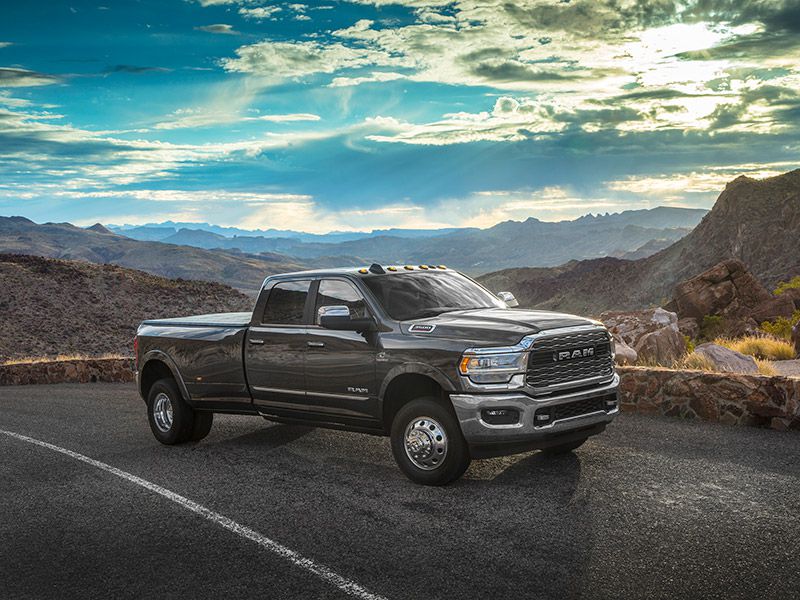
Photo by Fiat Chrysler Automobiles
Driving Dynamics
It’s astonishing how easy these trucks are to drive considering their extreme size and weight. They’re even easy to drive around town, although you do have to pay attention. A dually’s extra-wide rear fenders and huge side mirrors stick out perilously and can easily take out your neighbor’s mailbox — or, worse, a row of parked cars.
The Ram 3500 doesn’t ride quite as well as a Ram 2500, which uses a unique coil-spring rear suspension, but it doesn’t beat you up either. With an empty bed, it’s a bit bouncy and jiggly over rough roads, but the air suspension does a remarkable job at keeping the ride livable. The Ford, however, rides just a bit smoother than the Ram when their beds are empty, and its controls are a bit more carlike. However, some may not like its heavy brake pedal. It requires some muscle.
Ford F-350 Super Duty
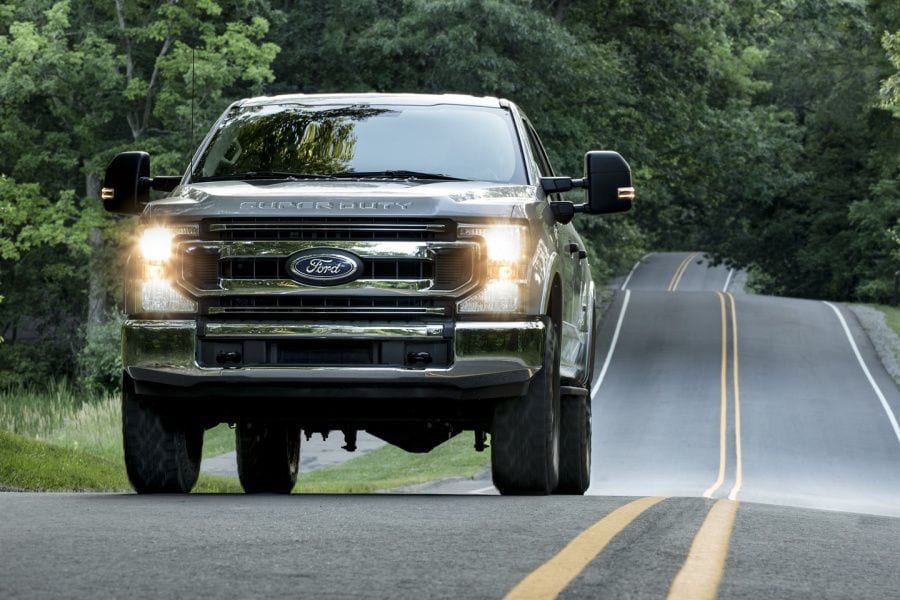
Photo by Ford
Value
With a standard cab and long bed, Ford offers the F-350 with the 6.2-liter engine and two-wheel drive for a little over $37,000. In that configuration, the Ram costs the same, but it comes with the larger and more powerful 6.4-liter V8. Ram’s popular crew cab models start at $40,500, while Ford’s four-door is about $500 cheaper.
Let’s jump to the diesel dually monsters like our test trucks. In base XL trim with the $10,495 diesel option, the Ford has a base price of just under $55,000. The Ram’s turbodiesel adds $9,300 to its bottom line, which is $47,800. Leap up to the Ford’s top trim level and the F-350 diesel dually with 2WD costs nearly $89,000. A 2WD diesel dually Ram in its top trim level with the High Output engine, which is an extra $12,000, starts at $77,000. With its better base engine and generally overall lower pricing, the Ram has the value advantage.
Ram 3500 Heavy Duty
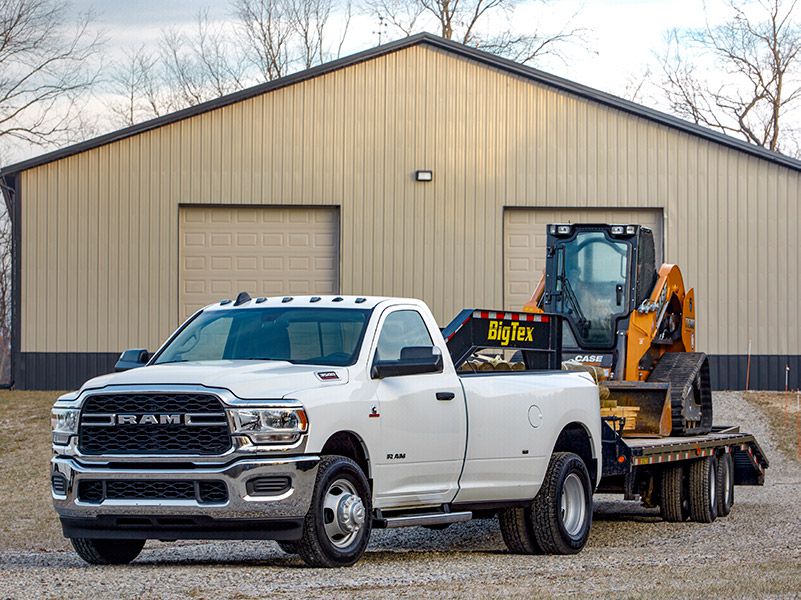
Photo by Fiat Chrysler Automobiles
Verdict
Overall these two trucks are very evenly matched. The improvements Ford has made to its largest pickup are significant. It’s a much better truck than before, now offering the most torque in its class, more payload and towing capacity, a smoother ride than the Ram, and superior driving dynamics. Ford consistently sells more heavy-duty pickups than Ram, and we don’t see it giving up its sales crown anytime soon.
But it’s the Ram that squeaks out a victory in this comparison, winning one more category than its rival, thanks to its eye-catching exterior styling, best-in-class interior design, segment-leading infotainment system, and more comfortable seats. We also give the Ram points for its overall value and its superior standard gas V8.
Ram 3500 Heavy Duty
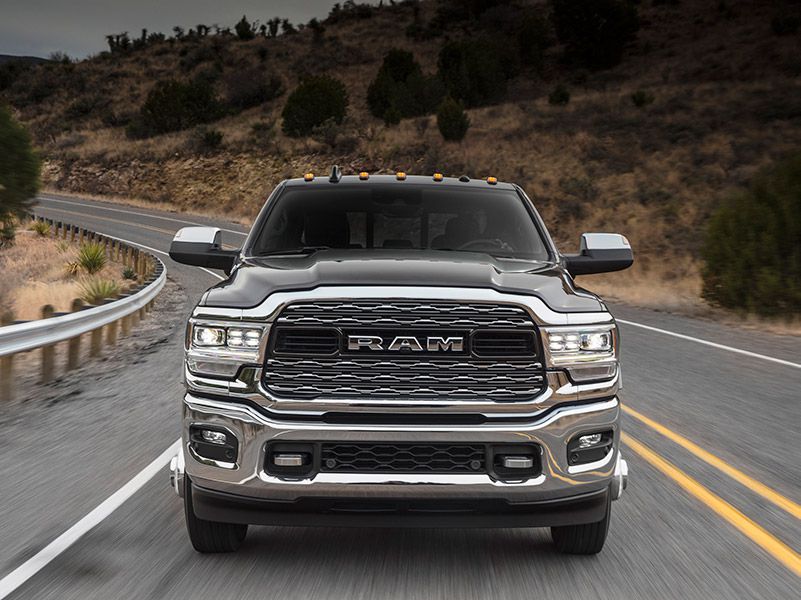
Photo by Fiat Chrysler Automobiles